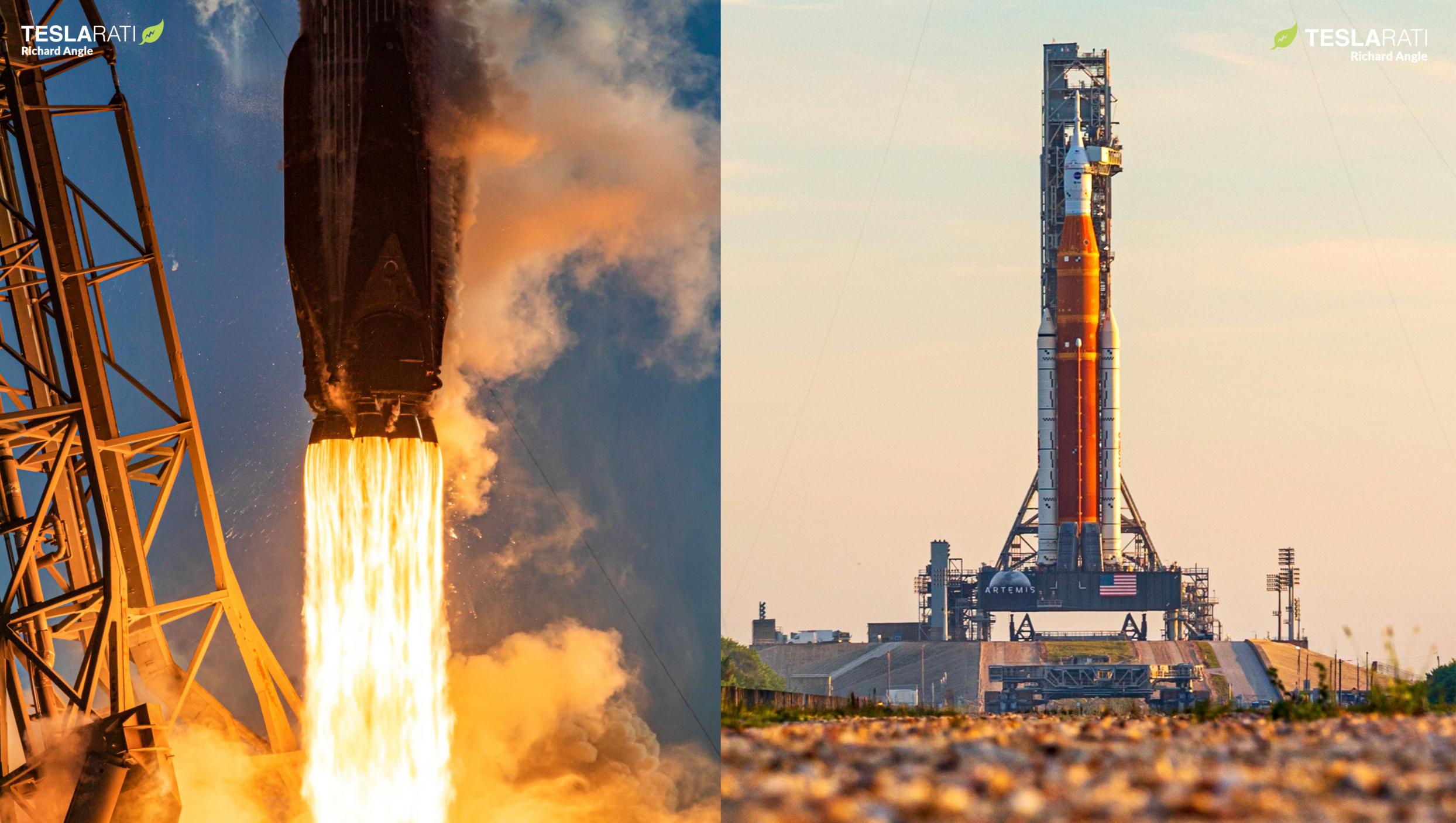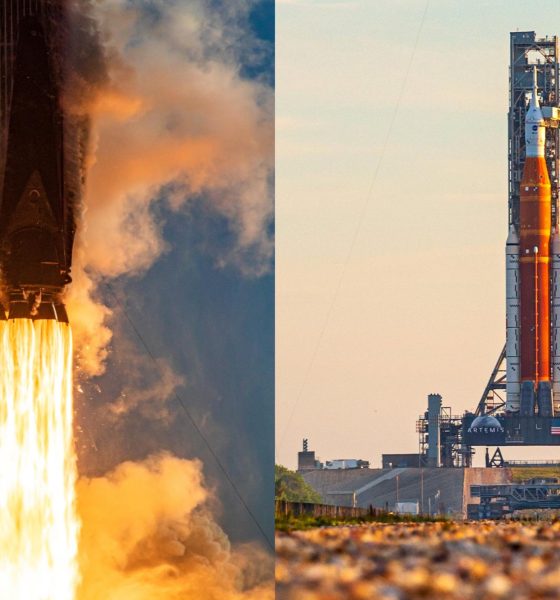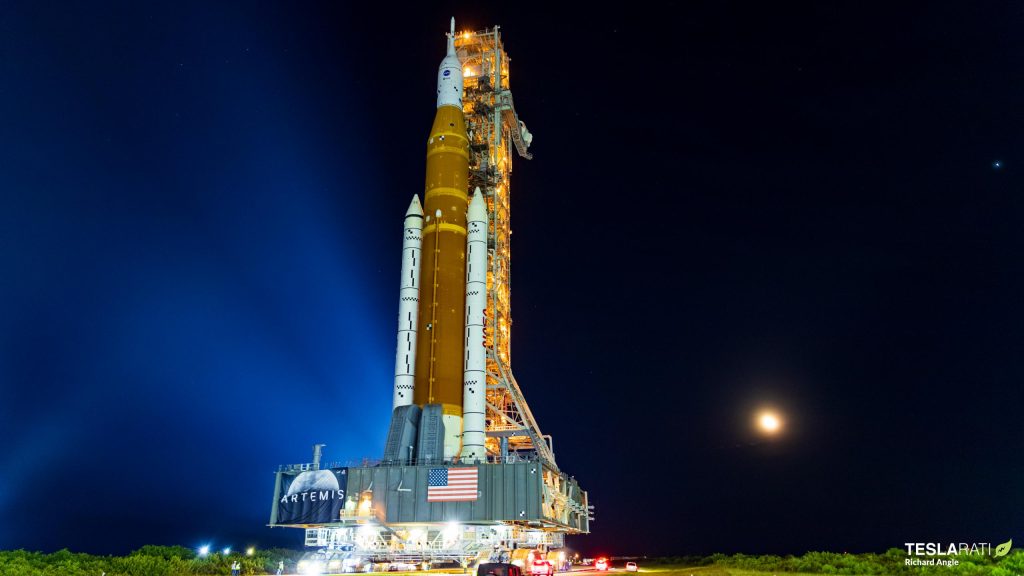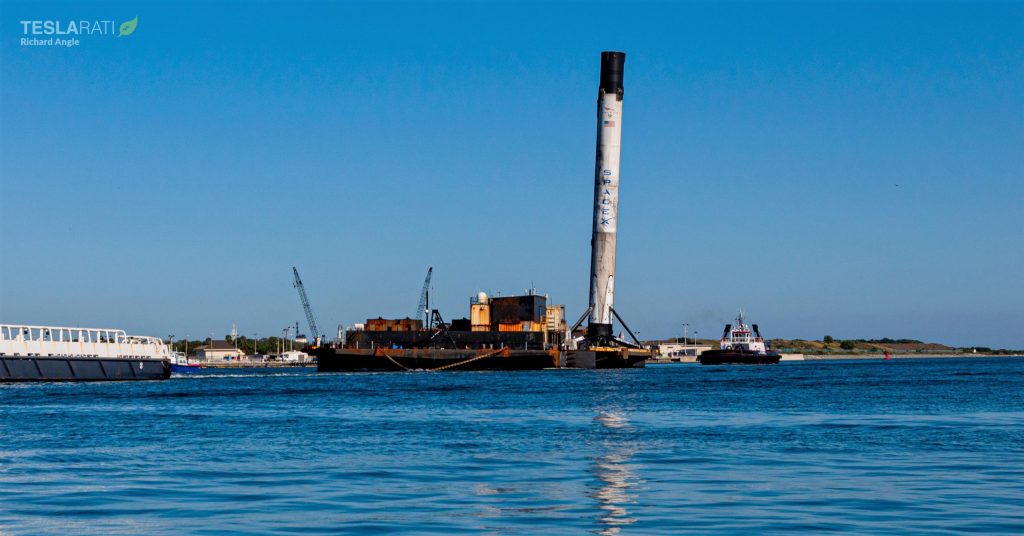

News
SpaceX to squeeze in Falcon 9 Starlink launch before NASA’s Moon rocket debut
SpaceX is preparing for at least one more Falcon 9 launch between now and the debut of NASA’s Space Launch System (SLS) Moon rocket, a milestone that could arrive as early as August 29th.
Depending on where the cards ultimately fall, Falcon 9 could launch up to three times between now and NASA’s last firm SLS launch window (September 5th). Multiple sources report that SpaceX’s next Falcon 9 launch – Starlink 4-23 – could occur as early as 10:22 pm EDT, Saturday, August 27th (02:22 UTC 28 August).
On August 23rd, SpaceX decided to transfer the mission from its NASA Kennedy Space Center (KSC) LC-39A pad to Cape Canaveral Air Force Station’s (CCASF) LC-40, likely in part because the latter pad is a few extra miles away from LC-39B, where NASA’s first SLS rocket is preparing for flight.
That late change may have been a simple consequence of one pad being more ready than the other was expected to be, but it could have also been driven by an abundance of caution on behalf of SpaceX, NASA, or both. At LC-40, a catastrophic Falcon 9 failure – however unlikely – would be less likely to harm the SLS rocket or Pad 39B than a similar failure at Pad 39A.
The odds of such a failure have arguably never been lower. SpaceX’s Falcon 9 workhorse recently completed its 143rd consecutively successful launch. By most reasonable measures, that string of successes likely makes Falcon 9 the most statistically reliable US rocket ever flown. SpaceX has also successfully launched 26 astronauts into orbit and returned them to Earth over the last two years. Nevertheless, given the almost $50 billion NASA will have spent on SLS and its Orion spacecraft and launch pad by the time the rocket finally lifts off, even the most extreme attempts to maximize caution could be considered reasonable.


If SLS manages to lift off during its first window, which stretches from 8:33 am to 10:33 am EDT (12:33-14:33 UTC) on August 29th, the Moon launch could find itself sandwiched between SpaceX ‘sStarlink 4-23 mission on August 27th and Starlink 3-4 on August 31st. In addition to Starlink 4-23 and 3-4, SpaceX is preparing to launch Starlink 4-20 and at least one rideshare payload no earlier than September 4th. If the first SLS launch somehow misses its first two windows on August 29th and September 2nd, the rocket’s next window of opportunity opens on September 5th.
Emphasizing the potential power of distributed launches once a high launch cadence is achieved, SpaceX’s much smaller Falcon 9 rockets have launched hundreds of tons over the last 12 months – several times more payload than the 95 tons (~210,000 lb) the multi-billion-dollar SLS is designed to launch to low Earth orbit (LEO) in one go. In fact, after Starlink 4-23, SpaceX’s fleet of partially reusable Falcon 9 rockets will have launched around 95 tons of Starlink satellites to LEO (and one South Korean spacecraft to the Moon) in less than six weeks.
Assuming it launches last, Starlink 4-20 (NET Sept 4) will be Falcon 9’s 146th consecutively successful launch and 52nd launch in 52.3 weeks, more or less achieving a 12-month running average of one Falcon 9 launch per week.

News
Tesla FSD fleet is nearing 7 billion total miles, including 2.5 billion city miles
As can be seen on Tesla’s official FSD webpage, vehicles equipped with the system have now navigated over 6.99 billion miles.

Tesla’s Full Self-Driving (Supervised) fleet is closing in on almost 7 billion total miles driven, as per data posted by the company on its official FSD webpage.
These figures hint at the massive scale of data fueling Tesla’s rapid FSD improvements, which have been quite notable as of late.
FSD mileage milestones
As can be seen on Tesla’s official FSD webpage, vehicles equipped with the system have now navigated over 6.99 billion miles. Tesla owner and avid FSD tester Whole Mars Catalog also shared a screenshot indicating that from the nearly 7 billion miles traveled by the FSD fleet, more than 2.5 billion miles were driven inside cities.
City miles are particularly valuable for complex urban scenarios like unprotected turns, pedestrian interactions, and traffic lights. This is also the difference-maker for FSD, as only complex solutions, such as Waymo’s self-driving taxis, operate similarly on inner-city streets. And even then, incidents such as the San Francisco blackouts have proven challenging for sensor-rich vehicles like Waymos.
Tesla’s data edge
Tesla has a number of advantages in the autonomous vehicle sector, one of which is the size of its fleet and the number of vehicles training FSD on real-world roads. Tesla’s nearly 7 billion FSD miles then allow the company to roll out updates that make its vehicles behave like they are being driven by experienced drivers, even if they are operating on their own.
So notable are Tesla’s improvements to FSD that NVIDIA Director of Robotics Jim Fan, after experiencing FSD v14, noted that the system is the first AI that passes what he described as a “Physical Turing Test.”
“Despite knowing exactly how robot learning works, I still find it magical watching the steering wheel turn by itself. First it feels surreal, next it becomes routine. Then, like the smartphone, taking it away actively hurts. This is how humanity gets rewired and glued to god-like technologies,” Fan wrote in a post on X.
News
Tesla starts showing how FSD will change lives in Europe
Local officials tested the system on narrow country roads and were impressed by FSD’s smooth, human-like driving, with some calling the service a game-changer for everyday life in areas that are far from urban centers.

Tesla has launched Europe’s first public shuttle service using Full Self-Driving (Supervised) in the rural Eifelkreis Bitburg-Prüm region of Germany, demonstrating how the technology can restore independence and mobility for people who struggle with limited transport options.
Local officials tested the system on narrow country roads and were impressed by FSD’s smooth, human-like driving, with some calling the service a game-changer for everyday life in areas that are far from urban centers.
Officials see real impact on rural residents
Arzfeld Mayor Johannes Kuhl and District Administrator Andreas Kruppert personally tested the Tesla shuttle service. This allowed them to see just how well FSD navigated winding lanes and rural roads confidently. Kruppert said, “Autonomous driving sounds like science fiction to many, but we simply see here that it works totally well in rural regions too.” Kuhl, for his part, also noted that FSD “feels like a very experienced driver.”
The pilot complements the area’s “Citizen Bus” program, which provides on-demand rides for elderly residents who can no longer drive themselves. Tesla Europe shared a video of a demonstration of the service, highlighting how FSD gives people their freedom back, even in places where public transport is not as prevalent.
What the Ministry for Economic Affairs and Transport says
Rhineland-Palatinate’s Minister Daniela Schmitt supported the project, praising the collaboration that made this “first of its kind in Europe” possible. As per the ministry, the rural rollout for the service shows FSD’s potential beyond major cities, and it delivers tangible benefits like grocery runs, doctor visits, and social connections for isolated residents.
“Reliable and flexible mobility is especially vital in rural areas. With the launch of a shuttle service using self-driving vehicles (FSD supervised) by Tesla in the Eifelkreis Bitburg-Prüm, an innovative pilot project is now getting underway that complements local community bus services. It is the first project of its kind in Europe.
“The result is a real gain for rural mobility: greater accessibility, more flexibility and tangible benefits for everyday life. A strong signal for innovation, cooperation and future-oriented mobility beyond urban centers,” the ministry wrote in a LinkedIn post.
News
Tesla China quietly posts Robotaxi-related job listing
Tesla China is currently seeking a Low Voltage Electrical Engineer to work on circuit board design for the company’s autonomous vehicles.

Tesla has posted a new job listing in Shanghai explicitly tied to its Robotaxi program, fueling speculation that the company is preparing to launch its dedicated autonomous ride-hailing service in China.
As noted in the listing, Tesla China is currently seeking a Low Voltage Electrical Engineer to work on circuit board design for the company’s autonomous vehicles.
Robotaxi-specific role
The listing, which was shared on social media platform X by industry watcher @tslaming, suggested that Tesla China is looking to fill the role urgently. The job listing itself specifically mentions that the person hired for the role will be working on the Low Voltage Hardware team, which would design the circuit boards that would serve as the nervous system of the Robotaxi.
Key tasks for the role, as indicated in the job listing, include collaboration with PCB layout, firmware, mechanical, program management, and validation teams, among other responsibilities. The role is based in Shanghai.
China Robotaxi launch
China represents a massive potential market for robotaxis, with its dense urban centers and supportive policies in select cities. Tesla has limited permission to roll out FSD in the country, though despite this, its vehicles have been hailed as among the best in the market when it comes to autonomous features. So far, at least, it appears that China supports Tesla’s FSD and Robotaxi rollout.
This was hinted at in November, when Tesla brought the Cybercab to the 8th China International Import Expo (CIIE) in Shanghai, marking the first time that the autonomous two-seater was brought to the Asia-Pacific region. The vehicle, despite not having a release date in China, received a significant amount of interest among the event’s attendees.








